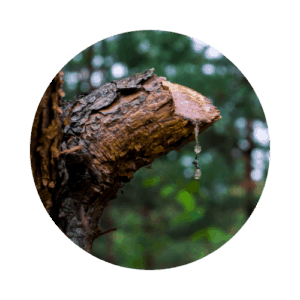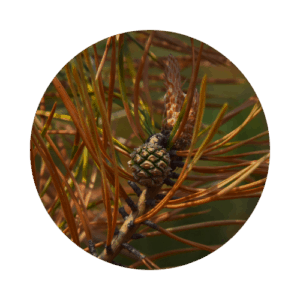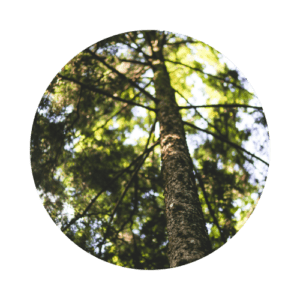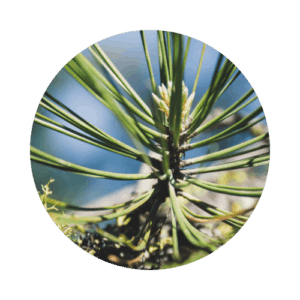We met the Schleners by accident one Saturday. A few of us were in the front yard when Mr. Schlener and his five children, ages ten and under, took a shortcut from their home that backed up to the neighbors across our cul-de-sac. They suddenly appeared in the neighbor’s lawn—a family of blonde, freckled children that mirrored ours.
The two fathers exchanged small talk as the children eagerly but shyly began to make each other’s acquaintance, little knowing that we would be fast friends within the week.
When Mom joined us in the front yard, Mr. Schlener invited us over for a cookout that evening but apologized that his wife wouldn’t be at home. Mrs. Schlener had flown out west to visit some family that weekend. To our amazement, he clarified that she had her pilot’s license and that she herself had actually flown the plane. Intrigued, I was thrilled to learn that such a woman existed but equally disappointed that I wouldn’t get to meet her. I hoped that we would become friends so that I might eventually get to know her.
That evening in the Schlener’s grassy backyard formed the basis of a friendship dominated by tag, blind man’s buff, and cops and robbers—games that would soon become standard afternoon fare for us.
Chris, the oldest, was my age. He had a quick wit and infectious laugh, and I soon began to covet his respect and regard—typically earned in foot races, chess matches, and arm-wrestling tournaments. Jessica, two years younger, was beautiful and fun and kind and we occasionally ducked away from the outdoor games for tea parties in her room.
I quickly grew to love these new friends, but I also found an old friend in their backyard—a climbing tree.
The towering, expansive pine tree called to me, but it wasn’t mine. I often held back cautiously when I wanted to climb it because the responsibilities of a guest weighed on me. I was at their home by invitation and I hadn’t been invited over so I could ascend into the companionable solitude of a tree. But I did find opportunities when it wouldn’t appear unfriendly to duck away and climb the tree—offering to sit out for a while to create even teams or suggesting games that required someone to be in the tree as lookout.
I would inhale the sharp, fresh scent of pine as I slipped under its welcoming shade and reached up to enter its embrace. Once I swung onto the lowest branch, I reverently wound around the tree, following its closely staggered limbs in a natural spiral staircase. It felt as if the branches would offer a safe ascent to the heavens if only they didn’t become progressively more spindly, springing and shivering dangerously under my feet as I approached the sky in mute but vigorous warning that this Jacob’s ladder only allowed passage in one direction.

Once I had reached the zenith allowed by safety considerations, I would run my fingers over the bark as if its surface were Braille and held stories revealed only to me. I would search for beads of sap, drops of living amber, as entrancing as they were sticky. Hours after pressing them between my fingers, I could still feel the satisfying cling of thumb and forefinger—a private, quiet pleasure, a secret kept between me and the tree.
When I didn’t discover any sap, I would observe and ponder, fingering pine needles which were almost smooth, but which caught with a subtle friction on my skin. When I was little, I had formed the impression that evergreens were always green, as the name might imply, and this impression had only been confirmed each fall as I witnessed them still clothed in greenery while deciduous trees laid down their robes.
But in the Schlener’s pine tree I realized that while the tree as a whole is always more or less green, individual needles fade into brown and fall to the ground.
Forming a slippery carpet in the shadow of the tree, the dried needles put the lie to my previously simple understanding. Now, calling the tree an evergreen felt false, not just inaccurate but misleading. It felt like saying that people live forever when yes, humanity lives on, but individuals die. Calling the tree evergreen felt as hollow as parents’ assurances to toddlers that of course they’ll always be around.
The tree gives the impression of continuity, the name gives the impression of eternity, but the needles still fall.

When Mrs. Schlener had flown home and I finally got to meet her, I encountered a vividly alive woman whose warm, friendly smile lit up her face and whose freckles rendered her unique and arresting beauty approachable.
I instantly knew if I spilled or broke something, she would be kind. Her soft, musical voice spoke of her childhood in Peru even when her words did not, and I loved when she would share tidbits from her years there like when she told us, as she walked us home under a full moon, that in Peru, children don’t look for the man in the moon but the rabbit in the moon.
Mrs. Schlener quickly felt like a second mother; I remember one evening we stayed over for dinner after playing all afternoon and I didn’t care for the meal served. I politely did my best with it and hoped to slip my leftovers into the trash unnoticed, but she noticed. Quietly, firmly she steered me back to the table to sit with me as I ate every bite. Wasting food in her home was unacceptable, she explained.
We were incredulous when several neighborhood families had gathered for a picnic in a nearby park lined with pine trees, and Mrs. Schlener, seven months pregnant with her sixth child, joined us in a pickup game of soccer. She informed us that she had played soccer often as a child in Peru, and then laughingly beat every one of us at both speed and footwork.
I regret now the many times we voiced our awe and recounted the tale. My own mother was confined to complete bedrest for the majority of her pregnancies and constricted by the demands of nursing infants and napping toddlers between pregnancies. I think now how our admiration must have stung in the face of her sacrifices, and I want to weep.
A mother playing soccer was something we had never seen, and the novelty impressed. But we wouldn’t for a second have traded our warm, comfortable, thoughtful, storytelling, song-singing mother for anyone else in the world, even if she could juggle while playing soccer on a unicycle.
But we didn’t think to tell her that then.
I hope the handstitched “I love you” notes and the dulcimer songs composed in her honor helped. Maybe they did. But probably not as much as telling her we saw her and knew her and loved her as she was. I wish we had known better.

After a few years, we moved away from Reston to a small house in a small town sixty miles west at the foot of the Blue Ridge Mountains. Shortly afterwards, work called the Schleners to California. I never saw Mrs. Schlener again.
When, thirteen years later, I learned she had died of melanoma, my world instantly felt less vibrant and alive. It felt shrunken and brittle and bitter. It seemed impossible that this lovely woman could had fallen.
Yet, even as my tears fell, I knew that she herself had not fallen, but risen.
The tree of life had offered her passage, and with a sure footing, she had ascended that spiraling, evergreen staircase; its branches did not bow beneath her feet but bore her up, ever and always up, into the expansive embrace of life everlasting.
She had flown home.

Rachel Brown
enjoys sipping tea, savoring good books, and spending time outside.
She is daily inspired to live more deeply and love more fully by her husband and two children.

3 Responses
This is beautiful, Rachel. Thank you for sharing!
This is the sweetest, Rachel.
What a joy those childhood days were!
Absolutely beautiful! My heart is full remembering all these details through your eyes and heart. God has gifted you with an amazing memory….and the incredible gift of being able to recreate scenes from life and give them meaning and purpose. Looking back helps us to look forward. I love you!!!💕